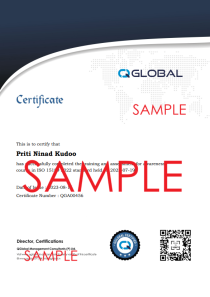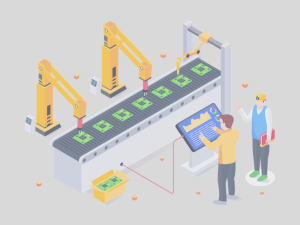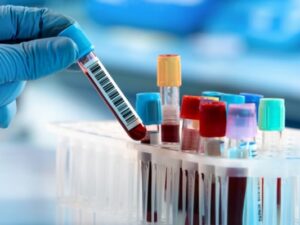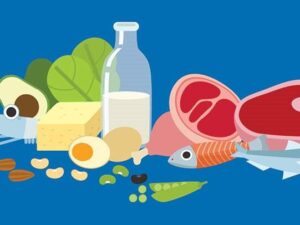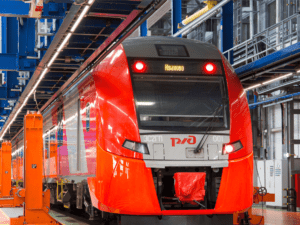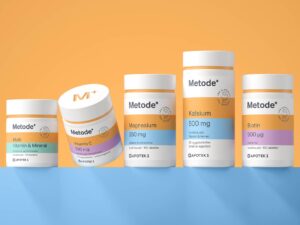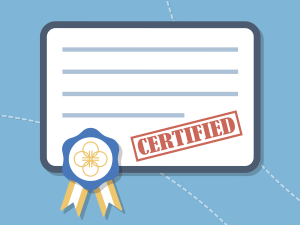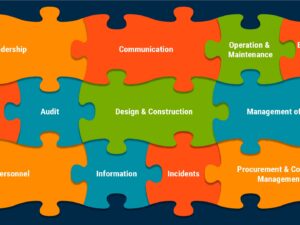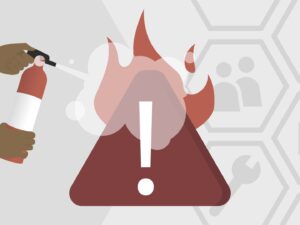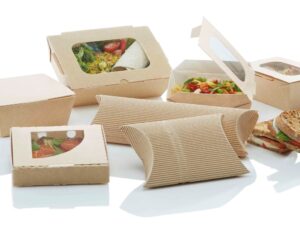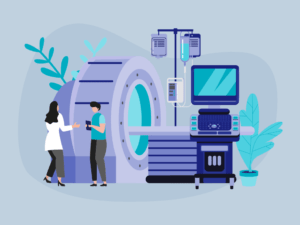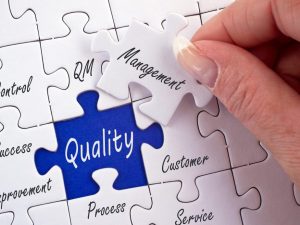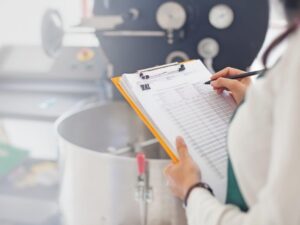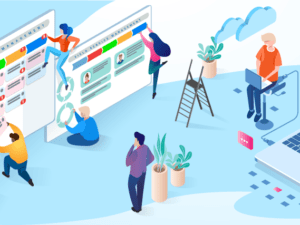ISO 9001 2015 & ISO 22000 2018 Integrated Management System (IMS) - Awareness Course
- Description
- Curriculum

The ISO 9001 standards provide guidance and tools for organizations who want to make sure that their products and services consistently meet customer’s requirements, and that quality is consistently improved. ISO 9001 standards sets out the criteria for a quality management system and is the only standard in the family that can be certified to (although this is not a requirement). It can be used by any organization, large or small, regardless of its field of activity. Keeping food safe from farm to fork by ensuring hygienic practices and traceability at every step of the supply chain are essential tasks for the food industry. ISO 22000, Food safety management systems – Requirements for any organization in the food chain, sets out the requirements for a food safety management system. It defines what an organization must do to demonstrate its ability to control food safety hazards and ensure that food is safe for consumption. ISO 22000 is applicable to all organizations in the food and feed industries, regardless of size or sector. It is designed in a way that it can be integrated into an organization’s existing management processes but can also be used alone. ISO 22000 is based on the Codex principles for food hygiene and this enables authorities to refer to ISO 22000 in national requirements and government inspections to ensure that all the criteria for food safety are met. This awareness course on an integrated management system based on ISO 9001 2015 and ISO 22000 2018 standards teaches you the process approach, quality management principles and the requirements and benefits of ISO 9001 2015 and ISO 22000 2018 standards. The essential objective of this awareness course is to create awareness for participants regarding various basic requirements of these integrated management system standards & impart working knowledge on how these requirements can be interpreted to suit the organization’s processes, products, people & customers.
Who Should Attend?
- Anyone involved in the planning, implementing, maintaining, supervising or auditing of an ISO 9001 2015 quality management system and ISO 22000 2018 food safety management system
- Jobseekers interested in understanding the best quality and food safety management practices followed by various organisations
- Anyone looking to gain skills and knowledge to improve their career performance
Key Benefits
- Understand the structure of ISO 9001 2015 and ISO 22000 2018 standards
- Learn importance and benefits of an ISO 9001 2015 quality management system and ISO 22000 2018 food safety management system
- Understand key requirements, terms and definitions of ISO 9001 2015 and ISO 22000 2018 standards
- Main concepts such as risk-based thinking, process approach, Plan-Do-Check-Act, and quality management principles.
- Prepare yourself to participate in the implementation process of ISO 9001 2015 and ISO 22000 2018 standards
- Understand the method of managing food safety hazards, its impact and drive continual improvement
- Manage quality, food safety and drive continual improvement
- Take steps to ensure that quality and food safety is at the heart of your organization
- Attract and retain customers by meeting their current and future needs better
- Learn techniques to create and manage documents and records relevant to this integrated management system , critical to the products and services delivered and those required to meet customer and regulatory requirements
- Fill gaps in your professional knowledge
Learning & Evaluation Method
This is a live and interactive course. Once you purchase the course, our team will contact you to plan the training. No matter where you are located, we schedule the classes based on your convenience and time zone. You can plan to attend the training in sessions of 4 or 8 hr duration, based on how much time you can spend in a day.
Certification
There are increasing numbers of organizations, who prefer candidates those who have completed management system trainings from a recognized institution. Certification demonstrates your commitment to superior professionalism, upholding industry standards, and continued learning. These merits can help boost your professional credibility and prestige within your own network, in your organisation, with your current clients, and when pursuing new business opportunities. After the successful completion of the course and final exam, you will be awarded with a certificate of completion issued by QGlobal. Your credentials will be made available in the global online directory and can be verified by anyone searching with the certificate number. Without doubt we can say that our training courses are well recognized and sought after by organizations across various geographies.
Buy for group Are you planning to buy this course for a group? We have the best prices for you! Select ‘Buy for Group’ option and add to the cart. You will get a discount of 60 – 75% for a group of up to 10 participants. To make a group purchase, create your group name and add individual emails of up to 10 participants. Each participant will get the access to the course materials, exam and the certificate. We will arrange one live-online session for the entire group.
Total: 206 Courses View all
Total: 206 Courses View all
-
1Introduction to standards and certification
- Purpose of standardization
- Benefits of certification
-
2Introduction to ISO 9001 2015 standards
Application areas
Terms and definitions
Quality management principles
Process based approach
Plan-Do-Check-Act cycle
Risk based thinking
Benefits of certification
Certification process flow
-
3Introduction to ISO 22000 2018 standards
- Scope of ISO 22000
- Normative references
- Terms and definitions
-
4IMS 922 Context of the organization
- Understanding the organization and its context
- Understanding the needs and expectations of interested parties
- Determining the scope of the quality & food safety management system
- Quality & food safety management system and its processes
-
5IMS 922 Leadership
- Leadership and commitment
- Customer focus
- Policy
- Establishing the quality & food safety policy
- Communicating the quality & food safety policy
- Organizational roles, responsibilities and authorities
-
6IMS 922 Planning
- Actions to address risks and opportunities
- Quality & food safety objectives and planning to achieve them
- Planning of changes
-
7IMS 922 Support
- Resources
- People
- Infrastructure
- Environment for the operation of processes
- Monitoring and measuring resources
- Organizational knowledge
- Competence
- Awareness
- Communication
- Documented information
- Creating and updating
- Control of documented information
- Externally developed environment of the food safety management system
- Control of externally provided processes, products and services
-
8IMS 922 Operation
- Operational planning and control
- Requirements for products and services
- Customer communication
- Determining the requirements for products and services
- Review of the requirements for products and services
- Changes to requirements for products and services
- Design and development of products and services
- Design and development planning
- Design and development inputs
- Design and development controls
- Design and development outputs
- Design and development changes
- Control of externally provided processes, products and services
- Type and extent of control
- Information for external providers
- Production and service provision
- Control of production and service provision
- Identification and traceability
- Property belonging to customers or external providers
- Preservation
- Post‐delivery activities
- Control of changes
- Release of products and services
- Control of nonconforming outputs
- Pre requisite programms (PRPs)
- Traceability system
- Emergency preparedness and response
- Handling of emergencies and incidents
- Hazard control
- Preliminary steps to enable hazard analysis
- Characteristics of raw materials, ingredients and product contact materials
- Characteristics of end products
- Intended use
- Flow diagrams and description of processes
- Preparation of the flow diagram
- On-site confirmation of flow diagrams
- Description of processes and process environment
- Hazard analysis
- Hazard identification and determination of acceptable limits
- Hazard assessment
- Selection and categorisation of control measures
- Validation of control measures and combinations of control measures
- Hazard control plan (HACCP/OPRP plan)
- Determination of critical limits and action criteria
- Monitoring systems at CCPs and for OPRPs
- Actions when critical limits or action criteria are not met
- Implementation of the hazard control plan
- Updating the information specifying the PRPs and the hazard control plan
- Control of monitoring and measuring
- Verification related to PRPs and action control plan
- Verification
- Analysis of results of verification activities
- Control of product and process non conformities
- Corrections
- Corrective actions
- Handling of potentially unsafe products
- Evaluation for release
- Disposition of non conforming products
- Withdrawal/Recall
-
9IMS 922 Performance evaluation
- Monitoring, measurement, analysis and evaluation
- Customer satisfaction
- Analysis and evaluation
- Internal audit
- Management review
- Management review inputs
- Management review outputs
-
10IMS 922 Improvement
- Nonconformity and corrective action
- Continual improvement

